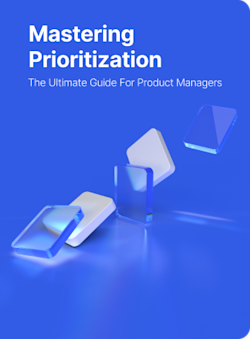Churn
What is churn?
Definition of churn
Churn is the percentage of customers that stop using your business during a given time frame.
Churn rate is one of the most important metrics that a company with recurring payment customers can calculate, and is most often expressed as a percentage of subscribers that have canceled their recurring payment plans.
Who uses churn rates?
Just as we stated above, companies with customers that pay via recurring payment benefit greatly from calculating churn rate. However, churn can be used by any company in any industry.
As long as you have recurring customers and are seeking to acquire new ones, you can calculate and benefit from churn rates.
How to calculate churn
Calculating churn rate is very simple. All you need to do is designate a period of time. Next, calculate how many customers were acquired, and how many customers were churned during that time period.
Take the number of churned customers and divide it by the total number of acquired customers. Finally, divide that number by 100%, and you have your churn rate for that period.
It’s worth noting that churn rate should be tracked frequently. It’s worth it to calculate churn monthly, quarterly, and annually.
There are many tools online to help you calculate and track your churn rate.
Examples of churn
Let’s say that your SaaS company acquired 1,000 customers during the month of May. Let’s also say that your company lost 100 customers because they were not informed that they needed to renew their subscriptions.
If we take the churned customers (100) and divide it by the acquired customers (1,000), then multiply that number by 100%, we get a 10% churn rate.
Although churn is most often associated with the percentage of customers lost, there are a few other ways to calculate churn:
Value of recurring business lost
Percentage of recurring value lost
Advantages of calculating churn
Ideally, the lower the churn rate, the better. It is far more expensive to acquire new customers than it is to retain old ones. This is simply because existing customers know your product. Additionally, losing customers can greatly impede growth.
In order to make up for those lost customers, you will have to spend time and money to convince them that your product is worth spending money on. On the other hand, existing customers already know because they’ve already purchased it.
Because of this, the slightest shift in churn rate could either mean big profits or big losses. Something as little as 0.02% increase in your churn rate can result in a massive loss.
Why do customers churn?
Customer no longer wants your product
Whatever attracted the customer in the first place is gone. Whether that’s company values, product quality, or the price point at which the product was first introduced to them.
Bad user experience
This could be a bad UI update, a lack of important features, or even something as simple as a minor bug.
Customer found a better alternative
This is probably the most common, as customers are always on the lookout for a better deal.
How to reduce churn rate
As stated above, the lower the churn rate, the better. Churn rate has many different factors and it’s up to you to keep track of them. Depending on the industry, product, company, and every other element you can think of, there are many different ways to decrease churn.
That being said, there are a few simple things you can do to insure your churn rate stays nice and low. Here are a few of the more popular examples:
Address churn as it happens
Churn is inevitable. No matter who you are and what sort of business you run, churn will happen. As churn is calculated, it is vital that you use what you learn to prevent customers from churning for the same reasons in the future.
Invest in your best customers
Every business has big-ticket clients. These clients are considered more valuable than the rest. It is worth it to spend extra time with them, and make sure they have everything they need.
Ask for feedback
Feedback is very important in any situation, but especially when talking about churn. The best way to solve any potential issues is to address them as soon as possible. Asking for feedback from customers can really shine some light on why other customers are leaving.
For example, you may be able to determine how long it takes the average customer to churn from the time they first log in. Sending out a feedback survey before that time arrives would be most ideal.
Communicate often
Transparency is vital for the longevity of a company. Staying open and communicating with you customers is one of the best ways to let them know you care.
In order to communicate on a broad spectrum, you will need to create interesting and engaging content, interact with customers via social media, and keeping every updated via email.
Communicating openly and honestly lets customers know that they can trust you. That means they will most likely continue to buy your product.
Make it easy for new customers
Making sure your new customers have everything they could possibly need to transition into your brand is important. In a way, this point is a combination of everything else in this list.
Creating a well-rounded onboarding process is the easiest way to make new customers feel welcome. You’d be surprised how far a simple welcome email will go. Taking it a step further with tutorials and educational materials will really help new customers navigate and feel comfortable with your product or service.
Be competitive
No matter what business you’re in, there will be competition. You will have to stay on top of pricing, features, incentives, and quality in order to make sure your customers are getting the best bang for their buck and you maintain your competitive advantage.
Of course, this is a short list, and there are many more things we could add. The key is to make sure you customers, new and old, are happy.
What is customer churn?
Customer churn is the number of customers that your business loses over a period. It can be a stressful metric to consider, but also one of the most important.
Customer churn is generally considered by subscription-based businesses, who expect to have recurring sales from the majority of their customers. Churn, also known as customer turnover, can be used to ensure that you are gaining as many customers are you're losing over a given period, or at the very least ensure that the numbers are about even.
This number is vital because it tells you how successful your business is at the moment, giving you an idea of when you're doing something right and when you've done something wrong.
What is churn in a SaaS business?
Customer churn in a SaaS business couldn’t be a more vital metric. It's the number of subscribers that are canceling their subscription over a specified period. As retaining subscribers is key to growing your business, it's one of the most important metrics for your business to track.
It's important to note that churn is inevitable. Also, most SaaS businesses, especially the more niche, will encounter a ceiling for their product, indicating that they have maxed out their space in the marketplace. When you reach this point, it's key to keep the new customers coming in and the old customers leaving at an even rate.
What is churn in an eCommerce business?
In an eCommerce business, customer churn is an indicator of a poor retention rate. It's the number of customers that purchase an item and then move on rather than continuing down your funnel and becoming more loyal customers.
While this isn't always an issue, it can be if you're investing resources into retaining customers. This isn't a goal for every eCommerce, but if it is for yours, then customer churn is a number to watch out for.
What is churn in a B2B business?
In a B2B context, you should expect your customer churn to be lower than in other industries. This is because B2B relationships are generally long-lasting.
A high churn rate in the B2B sector is usually more concerning than it is in other industries.
What is churn in a media/entertainment business?
On the other hand, customer churn in the entertainment industry is to be expected. This is especially true for streaming services, which can expect customers to come and go frequently.
The key to mastering customer churn in the entertainment market is discovering what features of your streaming service are most important to your subscribers. Is it new content, original content, cult favorites, exclusive access, quantity or quality, etc.?
What is customer churn rate?
Customer churn rate is a bit different from customer churn in that it's less focused on customers leaving and more concerned with how quickly they're going and in what numbers.
In other words, this is a more specific way of looking at customer churn. It gives you hard data from one period to the next, providing greater insights into the reasons behind your churn.

General FAQ

Glossary categories
Prioritize with confidence

Experience the new way of doing product management








